Editor’s note: This post was originally published on 3/27/2018 and has been updated for accuracy and comprehension.
Vulcanization of rubber is a process designed to improve the elasticity of rubber and strength via the presence of sulfur and heating, which changes the structure of the rubber molecules.
Car tires, the hoses that firefighters use, and rubber bands.
These are just a small sampling of the wide range of products that are made with vulcanized rubber.
Let’s take a closer look at these transformative processes.
Vulcanization is a process that involves the use of chemicals to change natural rubber into a stronger, more durable substance.
Vulcanization is the process of treating rubber or plastic with chemicals so that it becomes stronger, more stable or has more elasticity.
In its natural state, rubber is somewhat elastic and not as strong as it could be.
Vulcanization developed as a way to strengthen it.
During the process, sulfur and other additives – “accelerators” – are introduced in order to create a way to bridge, or connect the polymer chains that already exist in the rubber.
Once the rubber has been vulcanized, it can be used commercially due to its durability, strength, and its non-stick properties.
There are two processes by which vulcanized rubber is generated.
This process is the most typical process of vulcanization and involves heating the rubber with the use of sulfur and pressure at 150 degrees C.
Other chemicals and agents can be used throughout the process, such as fillers to increase strength and resistance to wear and tear, or carbon black that acts as a reinforcer.
Free vulcanization means that the rubber is vulcanized by passing extremely hot steam throughout the rubbers.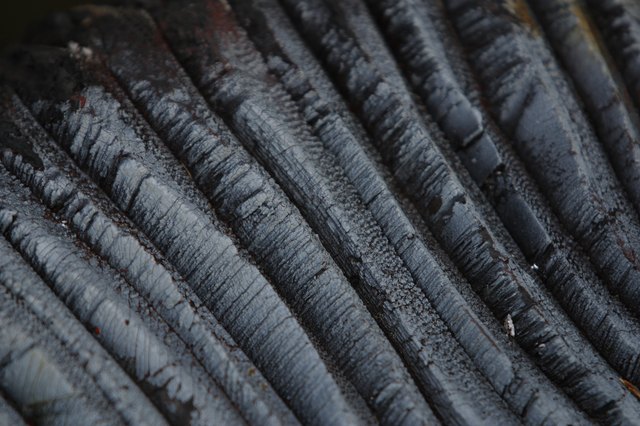
It takes about eight hours for vulcanization to be completed, however, certain chemical activators can be introduced to the process to speed up the time.
Each process for vulcanization is detailed and very thorough, meaning you need to know what you are doing to avoid danger or ruining the end result.
Pigments can also be added to create colored vulcanized rubber, and chemicals can be added to protect the color and durability.
Vulcanized rubber is used to make a variety of items, including the soles of shoes, hoses, hockey pucks, bowling balls, toys, tires, bouncing balls, and much more. Most of the rubber products manufactured are vulcanized.
There are many positives that can come from the vulcanization of rubber.
It’s 10 times more stronger and more durable than natural rubber and as a result, can be used for many more purposes than natural rubber.
Here’s a sampling of the products that are made with vulcanized rubber.
With the vulcanization process, we have access to many more products, luxuries, and abilities than we would have otherwise.
If you’d like to increase your rubber vulcanization manufacturing productivity or make your vulcanization process more streamlined, give us a call and find out what we can do for you.
Do you have a rubber vulcanization manufacturing process that needs to be updated?
Rubber is often processed with heat and sulfur during production to improve its physical properties. A process known as vulcanization, it makes the rubber stronger as well as more elastic. From tires and footwear to keypads and gaskets, countless products are made of vulcanized rubber. To learn more about vulcanized rubber and how it differs from traditional rubber, keep reading.
Vulcanized rubber is any type of rubber that’s been hardened through the use of heat and sulfur. It’s made via a curing process in which the rubber’s elastomers harden in response to heat and sulfur. Exposure to heat and sulfur creates new cross-links in the rubber that, ultimately, makes the rubber stronger and more elastic.
Vulcanized rubber is made using a multi-step vulcanization process. First and foremost, the rubber is submerged in a bathe of sulfur and additives. While sulfur is the primary ingredient used to facilitate vulcanization, other additives are mixed in with it. The bath may contain pigments for color as well as an accelerator to speed up the process.
First and foremost, the rubber is submerged in a bathe of sulfur and additives. While sulfur is the primary ingredient used to facilitate vulcanization, other additives are mixed in with it. The bath may contain pigments for color as well as an accelerator to speed up the process.
Next, the rubber is molded into the desired shape. Vulcanized ubber can’t be easily molded. Rather, it’s strong and elastic properties make it difficult to mold. Therefore, the rubber is molded after it’s submerged in a bath of sulfur and additives.
After being molded, the rubber is heated in an oven-like chamber. While sulfur alone can vulcanize rubber, the addition of heat helps to speed up the process while also allowing for better results. The rubber is heated to a temperature of about 300 to 400 degrees Fahrenheit, after which it’s removed from the heating chamber and allowed to cool.
When compared to traditional rubber, vulcanized rubber is significantly stronger. It’s able to withstand greater pressure and stress, making it preferred by many manufacturing companies.
It’s able to withstand greater pressure and stress, making it preferred by many manufacturing companies.
Vulcanized rubber is also more elastic than traditional rubber. Many people assume that strength is correlated to elasticity. Just because an object or material is strong, though, doesn’t necessarily mean that it can’t be elastic. Vulcanized rubber is both strong and elastic. With its increased elasticity, it can be stretched to a greater degree without succumbing to permanent deformation.
Vulcanized rubber is typically better protected against abrasion than traditional rubber. Abrasion consists of damage due to scraping. Vulcanized rubber is stronger and harder than traditional rubber, so it’s less likely to suffer abrasion damage.
No tags for this post.
Recommended
How to seal the inner tube of a bicycle at home?
How to paint a bicycle at home?
How to seal the bicycle inner tube
There are several ways to repair a puncture or cut in a bicycle inner tube, one of which is hot or cold vulcanization of tires. This method can be safely called reliable and durable, the wheel, fixed with raw rubber, will serve as new and will not be lowered at the most unexpected moment. You can easily carry out such repairs yourself with your own hands, both at home and outdoors on a hike with some necessary details. nine0011 The hot vulcanization method differs from the cold one only in how the patch applied to the wheel is fixed - with or without heating.
This method can be safely called reliable and durable, the wheel, fixed with raw rubber, will serve as new and will not be lowered at the most unexpected moment. You can easily carry out such repairs yourself with your own hands, both at home and outdoors on a hike with some necessary details. nine0011 The hot vulcanization method differs from the cold one only in how the patch applied to the wheel is fixed - with or without heating.
What is vulcanization? This is such a chemical process, due to which, with the expenditure of heat, the strength properties of rubber improve, it becomes elastic and hard. You can put a patch on the puncture using a piece of the old camera or a ready-made patch from the repair kit, and to fix them you need raw rubber with your own hands, which is sold in rolls with a protective film. This is a very plastic material, it sticks to any surface, easily sticks together into a lump, etc. raw rubber instructions for use are indicated on the package. nine0003
nine0003
The material for such repairs appeared back in 1939 in the United States, almost immediately began to be successfully used and is popular with cyclists and motorists around the world to this day. With it, you can easily and seamlessly repair any camera, the cold method is very easy to use at home. For the convenience of consumers, some manufacturers immediately offer ready-made repair kits (cold raw rubber, instructions for use are indicated on the package), which includes several patches of various sizes in the form of a plaster, sandpaper (sandpaper), which is used to clean the puncture site or scratch on the rubber , as well as a special quick-drying adhesive for cold vulcanization. It is he who reacts with a layer of raw rubber on a patch - it is applied in a bright color around black. This causes a vulcanization process, due to which the rubber of the chamber is easily glued together without heating (i. e. cold). This method is best for repairing wheels on the road when there are no more tools at hand. You will not find a single cyclist who has not been rescued by such a kit at least once in his life. It does not take up much space in a bag or backpack, and its importance cannot be overestimated, especially if you are alone on a trip without comrades far from the city. The whole process of repairing a tire using cold vulcanization with a patch of tube patch will take the cyclist no more than ten minutes, and the wheel will be like new. nine0003
e. cold). This method is best for repairing wheels on the road when there are no more tools at hand. You will not find a single cyclist who has not been rescued by such a kit at least once in his life. It does not take up much space in a bag or backpack, and its importance cannot be overestimated, especially if you are alone on a trip without comrades far from the city. The whole process of repairing a tire using cold vulcanization with a patch of tube patch will take the cyclist no more than ten minutes, and the wheel will be like new. nine0003
This technology is used a little longer than the cold one. At a time when there were not so many tire shops around, car and bike enthusiasts repaired their vehicles in the garage using exactly this method, for which an electric or gasoline vulcanizer is used, which can be easily assembled by hand. the technology here is as follows: the master burns gasoline, which heats the rubber with a piston.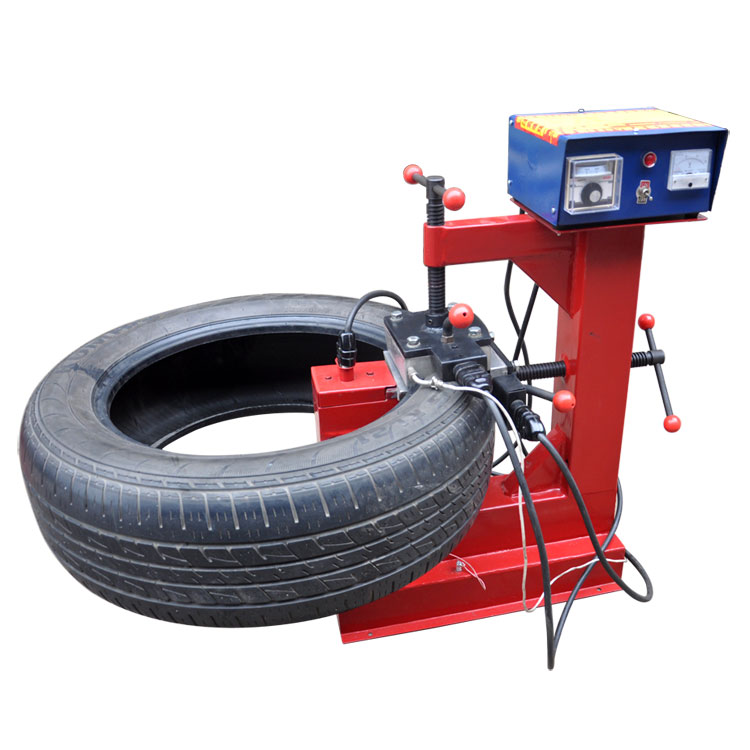 As soon as the temperature rises to 90 degrees, raw rubber for vulcanization begins to strengthen, if you raise the temperature to 147 degrees, the process goes much faster and better. But it’s better not to raise it above 150, because. the material begins to break down and loses its properties. After 160 degrees, raw rubber begins to char. The ideal warm-up time for hot vulcanizing raw rubber is about 8-10 minutes. A fragment of the material is applied to the puncture site on the chamber and squeezed with a clamp so that bubbles do not form during the chemical reaction and air does not collect, forming dangerous voids. nine0003
As soon as the temperature rises to 90 degrees, raw rubber for vulcanization begins to strengthen, if you raise the temperature to 147 degrees, the process goes much faster and better. But it’s better not to raise it above 150, because. the material begins to break down and loses its properties. After 160 degrees, raw rubber begins to char. The ideal warm-up time for hot vulcanizing raw rubber is about 8-10 minutes. A fragment of the material is applied to the puncture site on the chamber and squeezed with a clamp so that bubbles do not form during the chemical reaction and air does not collect, forming dangerous voids. nine0003
The technology of using hot vulcanization of raw rubber at home will be 40% more effective for the tire than cold, therefore, if possible, it is better to use this method.
Under field conditions, it is much more difficult to carry out such an operation for cameras, but it is still possible: if there is a fragment of raw rubber, you can heat it over a fire. You can determine the temperature of the flame by a piece of sugar or a piece of paper: both begin to melt / char at a temperature of 145 degrees - just the one required for vulcanization. As a clamp, you can use a flat heavy stone, a wooden log, or any other suitable object. nine0003
You can determine the temperature of the flame by a piece of sugar or a piece of paper: both begin to melt / char at a temperature of 145 degrees - just the one required for vulcanization. As a clamp, you can use a flat heavy stone, a wooden log, or any other suitable object. nine0003
You will spend about 20 minutes for the whole operation. Do not forget that the place where the camera patch is glued must be cleaned with sandpaper or at least wiped with gasoline to remove dirt from the tire.
Another alternative for repairing bicycle wheels on the go is a can of cement vulcanizer. You can buy them, for example, at the car market - such material is very popular among motorists. The formulation is sold in pressurized tins and aerosols from brands such as Abro, BL, Zefal, Top RAD and many more. nine0039 According to their composition, they are not hazardous to health and are not toxic, because. they do not contain chloride and aromatic hydrocarbons, so they can be used freely both at home and on the street without a protective mask.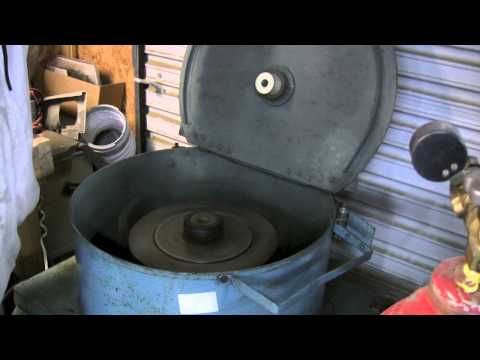 In order for tire cementation to occur, a temperature of 18 degrees Celsius is required. The composition is also used for hot vulcanization (requires 150 degrees). For repair, it is necessary to remove a foreign object from the rubber of the chamber that provoked a puncture, fill the chamber with a cement vulcanizer through the nipple, slightly pump it up with a pump and ride a bicycle for 2-3 kilometers to adjust the pressure in the wheels. This tire repair technology is simple and also used everywhere. To fix the result, it is possible to use a plaster patch followed by a hot vulcanization method - exactly the same as the instructions above describe. The technology is suitable for any tire cuts. the patch for repairing the chambers in this case is applied before the tire is filled with cement. nine0003
In order for tire cementation to occur, a temperature of 18 degrees Celsius is required. The composition is also used for hot vulcanization (requires 150 degrees). For repair, it is necessary to remove a foreign object from the rubber of the chamber that provoked a puncture, fill the chamber with a cement vulcanizer through the nipple, slightly pump it up with a pump and ride a bicycle for 2-3 kilometers to adjust the pressure in the wheels. This tire repair technology is simple and also used everywhere. To fix the result, it is possible to use a plaster patch followed by a hot vulcanization method - exactly the same as the instructions above describe. The technology is suitable for any tire cuts. the patch for repairing the chambers in this case is applied before the tire is filled with cement. nine0003
Contents of the article:
Punctured tire is an essential companion of any driver! This is one of those minor car breakdowns that can cause quite a lot of trouble, especially if there is no spare tire in the trunk.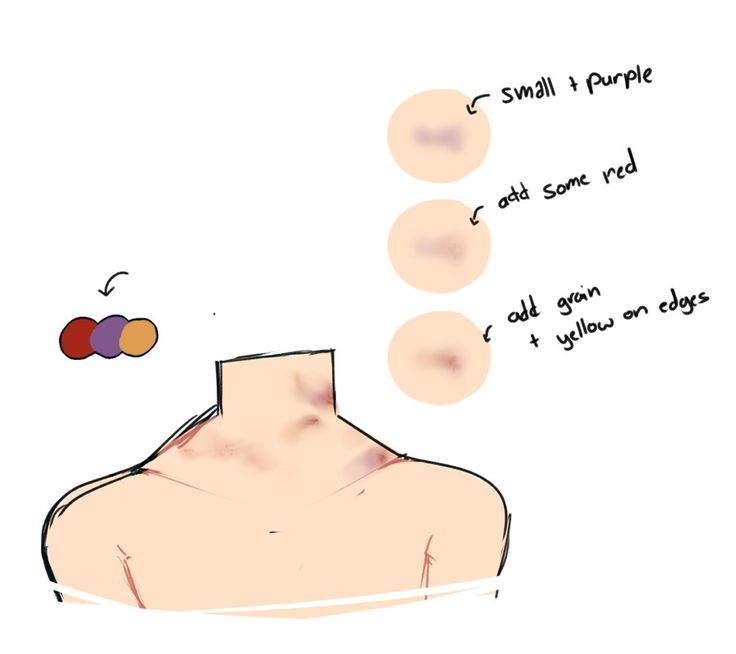 Today, when you can find a tire fitting service on every corner, domestic drivers, in order to save money, tend to return to the past! I'm sure many of you remember what rubber vulcanization looked like at home. Right now, I propose to figure out whether such tire fitting is relevant and, in fact, what the vulcanization process itself looks like at home. nine0003
Today, when you can find a tire fitting service on every corner, domestic drivers, in order to save money, tend to return to the past! I'm sure many of you remember what rubber vulcanization looked like at home. Right now, I propose to figure out whether such tire fitting is relevant and, in fact, what the vulcanization process itself looks like at home. nine0003
Contents
I hope everyone understands what vulcanization is. In 1935, hot vulcanization as a life-saving process for tires had absolutely no alternative. Thanks to Charles Cornell, in the same year, she appeared! This person came up with an innovative way to restore rubber at that time, without involving high temperatures. Today, his invention is better known as liquid ebonite. nine0003
That is, a formula was created according to which rubber, mixed with certain chemical reagents, formed an ideal repair compound for rubber.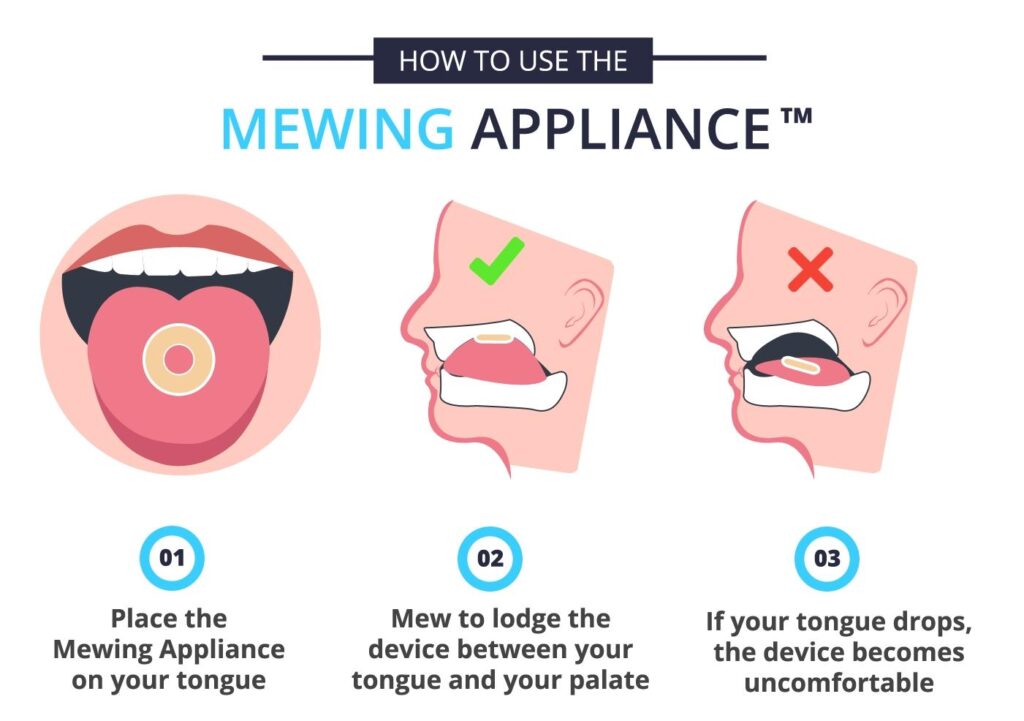 This glue, to the surprise of the opponents of the development, created a strong connection not only with ordinary patches and fungi, but also with all kinds of plaits or even reinforced patches. This effect is achieved due to a well-chosen chemical reaction, which allows the composition to literally "weld" into the tire and dry quickly (about 5 minutes). nine0003
This glue, to the surprise of the opponents of the development, created a strong connection not only with ordinary patches and fungi, but also with all kinds of plaits or even reinforced patches. This effect is achieved due to a well-chosen chemical reaction, which allows the composition to literally "weld" into the tire and dry quickly (about 5 minutes). nine0003
Repairing tires in this way is probably the easiest way for a car enthusiast to repair a punctured tire. On sale you can find a huge number of similar compositions from different manufacturers, I don’t want to choose. However, you yourself understand that you should not forget about the mentality of our people and manufacturers in particular - the declared properties do not always correspond to reality! But from my own experience I will say that there are plenty of really effective mixtures, the main thing is to follow the instructions exactly! nine0071
No matter how good cold tire vulcanization is, it cannot seriously compete with hot tire vulcanization even in the 21st century. Of course, if we are talking about an ordinary bicycle or even a car camera, then yes - here such a tool will cope with a bang. If you need to vulcanize truck tires or you need to repair the side cuts of the tire, there is only one way out - tire fitting under the influence of high temperatures.
Of course, if we are talking about an ordinary bicycle or even a car camera, then yes - here such a tool will cope with a bang. If you need to vulcanize truck tires or you need to repair the side cuts of the tire, there is only one way out - tire fitting under the influence of high temperatures.
Motorists started using this technology back in 1839year, after a certain Charles Goodyear presented his invention to the world. The essence of the discovery was as follows: it was necessary to combine the damaged rubber element with a patch or patch of a similar composition in such a way that the connection was strong and inseparable! Thanks to the creation of strong inextricable molecular bonds, this was possible, however, to obtain them, the vulcanized elements must be subjected to heat.
Of course, in the modern world, professionals in this field have mastered the skill ideally. They have special equipment, in fact, thanks to which the guys can not only help motorists in trouble, but also earn good money at the same time. nine0003
nine0003
We, in the presence of non-vulcanized rubber, have to choose: to go to a tire fitting or to make repairs on our own? Without a doubt, sometimes without specialists, well, there’s no way, but in spite of everything, every self-respecting driver simply must know how to repair tires with his own hands! We will talk about this further ...
So, for self-repair of a tire, we need:
The process itself is as follows:
